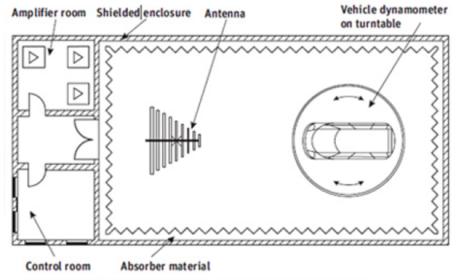While there’s a lot of cool technology in modern semiconductors, it’s important to raise our sights periodically to understand how well these chips will work in the systems for which they are designed. One area driving a lot of semiconductor growth is automobile electronics. We’ve had drive-train control forever it seems, but now that is enhanced to provide user-selectable ride-control. More recently we have seen advanced driver assistance systems, high-end infotainment options, mobile hot-spots, Bluetooth-enabled links to smart phones and more. But all that fancy electronics won’t be very useful (and might well become dangerous) if disrupted by external and internal EM interference. One big concern is the antenna represented by as much as 5 kilometers of interconnect in modern cars, which can both receive and transmit EM. Multiple radio sources from phones, tablets and Bluetooth devices inside or outside the car add to EMI concerns.

Amazingly (ha-ha) there are standards for automobile electronics beyond ISO 26262. ISO 11451-2 defines expectations for minimum EMI immunity in vehicle electronics. This requires measurements in and around the complete vehicle in an anechoic chamber. An antenna in the chamber generates RF waves swept by strength and frequency over specified ranges and interference is monitored at select test points in the car. Final testing must follow this methodology, but it is an expensive approach to require for experimentation during the design phase.
As always, simulation is the optimum approach for design but this is complex analysis problem. You have to model electronics and cabling, the car frame and the EM sources. ANSYS® pioneered in their HFSS software a Finite Element Method (FEM) simulation approach called the “domain decomposition method” (DDM) which makes it possible to parallelize the analysis across multiple machines. This itself was a big step forward in making numerical simulation a practical alternative to chamber testing.
For those of you who don’t know this domain so well, HFSS is the industry standard for full-wave electromagnetic field simulation. It is used extensively for design of antennas, communications systems, radar systems, satellites, smart phones and tablets and transportation electronics. It also integrates with ANSYS multiphysics solutions so you can, for example, combine electromagnetics simulations with thermal simulations.
ANSYS recently introduced a refinement to HFSS called FE-BI, using an integral equation approach to truncate boundaries around EM emitters and around the car; this greatly reduces the space that must be considered in analysis while preserving the accuracy of a complete FEM analysis. The impact of that reduction in a joint test with Fiat-Chrysler was a 10-fold increase in performance and a 10-fold reduction in memory demand. A realistic simulation of an external antenna transmitting from a distance to a car frame completed in just 28 minutes and calculated electric fields matched closely with a full FEM analysis.



Fiat-Chrysler engineers were also able to model the effect of a wiring harness as a transmitter inside the car, allowing them to determine the effects of coupling between the harness and a connected PCB. What impresses me about all of this analysis is the scale and detail it comprehends – from PCBs and individual wire connections, through the full car-frame, to external EM sources some distance away from the car. To design for the complexity we demand today in auto electronics and yet still to be able to model EMI to a level allowing detailed design decisions to optimize immunity, this is a high order of modeling.
To lean more about HFSS-BI and the Fiat-Chrysler experiments, click HERE.
Share this post via:






Comments
0 Replies to “Simulating Full-System EMI for a Car in Just 28 Minutes”
You must register or log in to view/post comments.